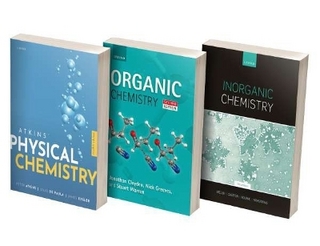
Handbook of Fullerene Science and Technology
Springer Verlag, Singapore
978-981-16-8995-6 (ISBN)
- Titel wird leider nicht erscheinen
- Artikel merken
All the covered research topics provide important fundamental knowledge for the natural sciences, but also for applications in molecular electronics, superconductivity, catalysis, photovoltaics and medical diagnostics. The current nanocarbon research activities have particularly high application potential in the conversion of solar energy, future molecular memories, non-conventional materials for optoelectronics, and new treatments for civilization diseases. Offering a truly up-to-date critical survey of nanocarbon science, its concepts and highlights, it follows the concept of a handbook: it addresses key topics systematically, from historical background, methodological aspects, current important issues, and application potential, all supplied with extensive referencing. With individual chapters written by leading experts with extensive research experience, it is a comprehensive reference resource for graduate students and active researchers alike.
Xing Lu is currently a Full Professor at Huazhong University of Science and Technology, sponsored by The National Thousand Talents Program of China. His research interests lie in the rational design and facile generation of novel hybrid carbon materials with applications in energy storage/conversion and biology. He received a Ph.D degree from Peking University in 2004, and then worked as a COE postdoc at Nagoya University. From 2006 to 2011, he was a Senior Scientist at University of Tsukuba. He is a recipient of The Ambassador Award from the Chinese Embassy in Japan (2009) and The Osawa Award from Fullerenes and Nanotubes Research Society of Japan (2011). He has published more than 100 peer-reviewed papers in leading international journals. Takeshi Akasaka was born in Tokyo and grew up in Osaka, Japan. He received a PhD degree from the University of Tsukuba in 1979. After working as a Postdoctoral Fellow at Brookhaven National Laboratory, he returned to the University of Tsukuba in 1981. In 1996, he moved to Niigata University as a Professor. Since 2001, he has been a Professor at the TARA Center and Department of Chemistry, University of Tsukuba. His research interests include the chemistry of carbon-rich materials. He received The Commendation for Science and Technology (Research Category) from The Ministry of Education, Culture, Sports, Science and Technology of Japan (2011) and The Chemical Society of Japan Award for Creative Work (2001). Zdenek Slanina was born in the former Czechoslovakia. He received his MA degree from Charles University in Prague and PhD from the (former) Czechoslovak Academy of Sciences where he was also employed between 1971 and 1991, up to the principal-senior-scientist level. After the fullerene-era beginning, he has been active in computational research and teaching at various fullerene research centers like: Hokkaido University, Sapporo; Max-Planck Institute for Chemistry, Mainz; University of Arizona, Tucson; Institute for Molecular Science, Okazaki; University of Tsukuba; Huazhong University of Science and Technology, Wuhan.
Tentative section list:Section 1
History and nomenclature of fullerenes
Section 2
Molecular structures of fullerenes
2.1 Preparation of fullerenes
2.2 Structural characteristics of fullerenes
2.3 Theoretical consideration of fullerenes
2.4 Experimental determination of fullerene structures
2.5 Formation mechanism of fullerenes
2.6 The connection between fullerenes and carbon nanotubes
Section 3
Chemical properties of fullerenes
Section 4
Assembled fullerene aggregates
Section 5
Applications of fullerenes and derivatives
5.1 Applications in photovoltaics
5.2 Applications in biomedicine
5.3 Applications in materials science (lubricants, photo-detectors, others)
Section 6
Endofullerenes: preparation, structure, property and application
6.1 Classification of endofullerenes
6.2 Preparation of endofullerenes
6.3 Chemical properties of endofullerenes
6.4 Applications (single molecule magnet, photovoltaics, electronics, biological applications and so on)
| Erscheint lt. Verlag | 11.10.2022 |
|---|---|
| Zusatzinfo | XX, 850 p. Print + eReference. |
| Verlagsort | Singapore |
| Sprache | englisch |
| Maße | 155 x 235 mm |
| Themenwelt | Naturwissenschaften ► Chemie ► Anorganische Chemie |
| Naturwissenschaften ► Chemie ► Physikalische Chemie | |
| Technik | |
| ISBN-10 | 981-16-8995-4 / 9811689954 |
| ISBN-13 | 978-981-16-8995-6 / 9789811689956 |
| Zustand | Neuware |
| Informationen gemäß Produktsicherheitsverordnung (GPSR) | |
| Haben Sie eine Frage zum Produkt? |
aus dem Bereich
